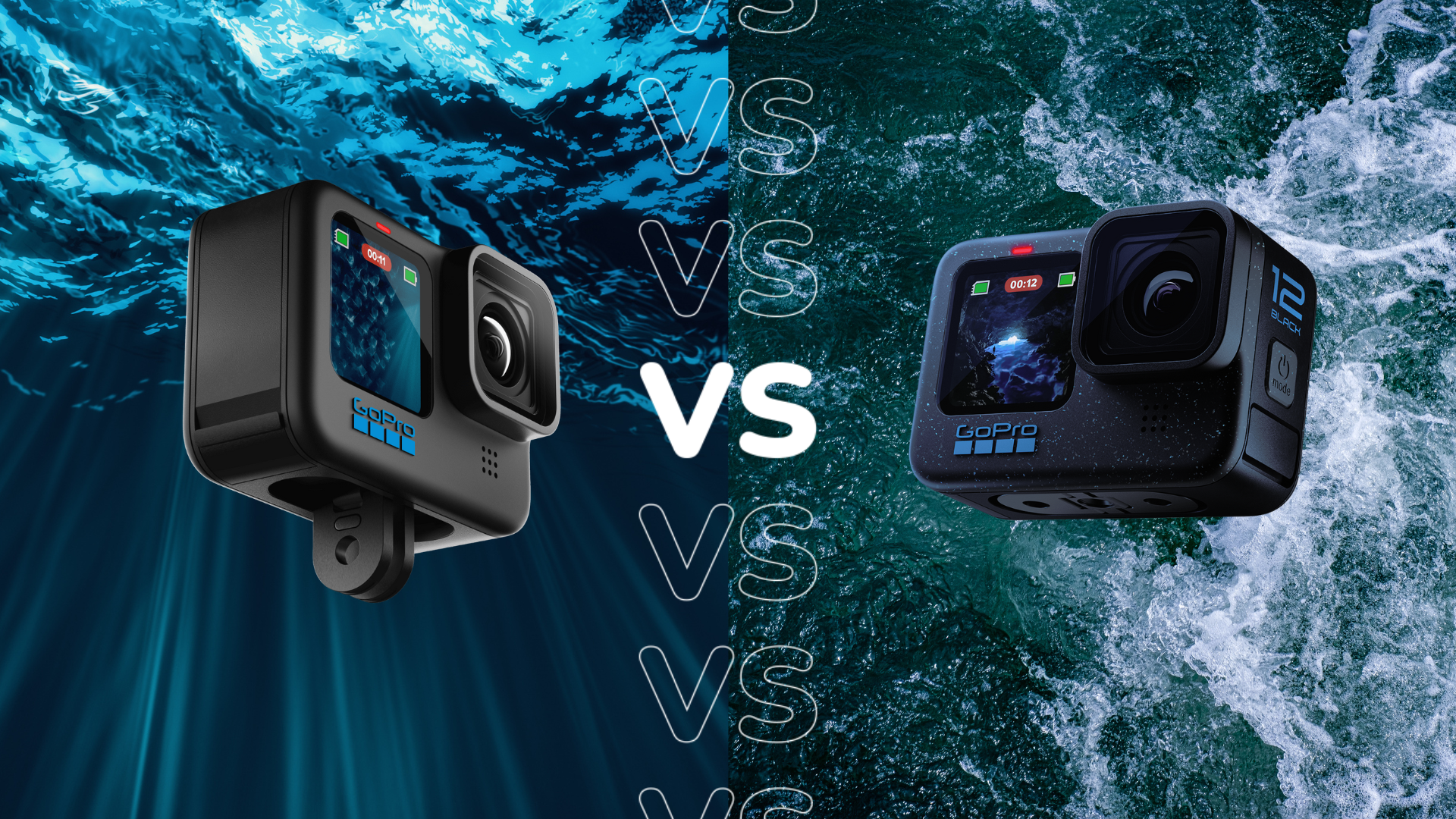Poco X6 vs Poco X6 Pro: What’s the difference?
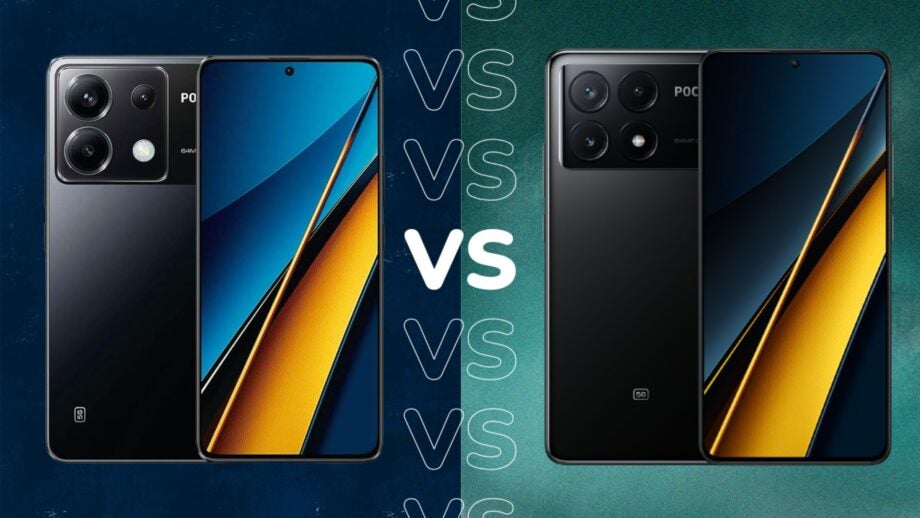
The Poco X6 and Poco X6 Pro are the newest smartphone launches to come from Poco by Xiaomi, as they arrived on the market in January 2024.
Despite being evenly matched with the X6 in design and camera, the X6 Pro model has a bigger processor which should, in theory, mean the X6 Pro is more powerful than the X6.
Read on to learn more about the key features and differences between the two handsets, see how they fared in our benchmark tests, and see which model is better for you.
Pricing and availability
Both the Poco X6 and X6 Pro have firmly cemented themselves in the mid-range smartphone market, in both the UK and EU, and there’s only £50 between the two. While the X6 is currently retailing for £319/€299, the X6 Pro retails for £369/€349.90.
Neither are currently available in the US.
Design
The Poco X6 and X6 Pro look and feel fairly similar, although there are a few differences. Both are available in three colours: the X6 is available in Black, Blue and White, whereas the X6 Pro is available in Black, Grey and Yellow.
The Black and Blue options for the X6 have a gloss finish on the rear, which is replicated in the Black and Grey X6 Pro options. The White X6, however, has a marble-like pattern across the rear, whereas the Yellow X6 Pro has a vegan leather rear.

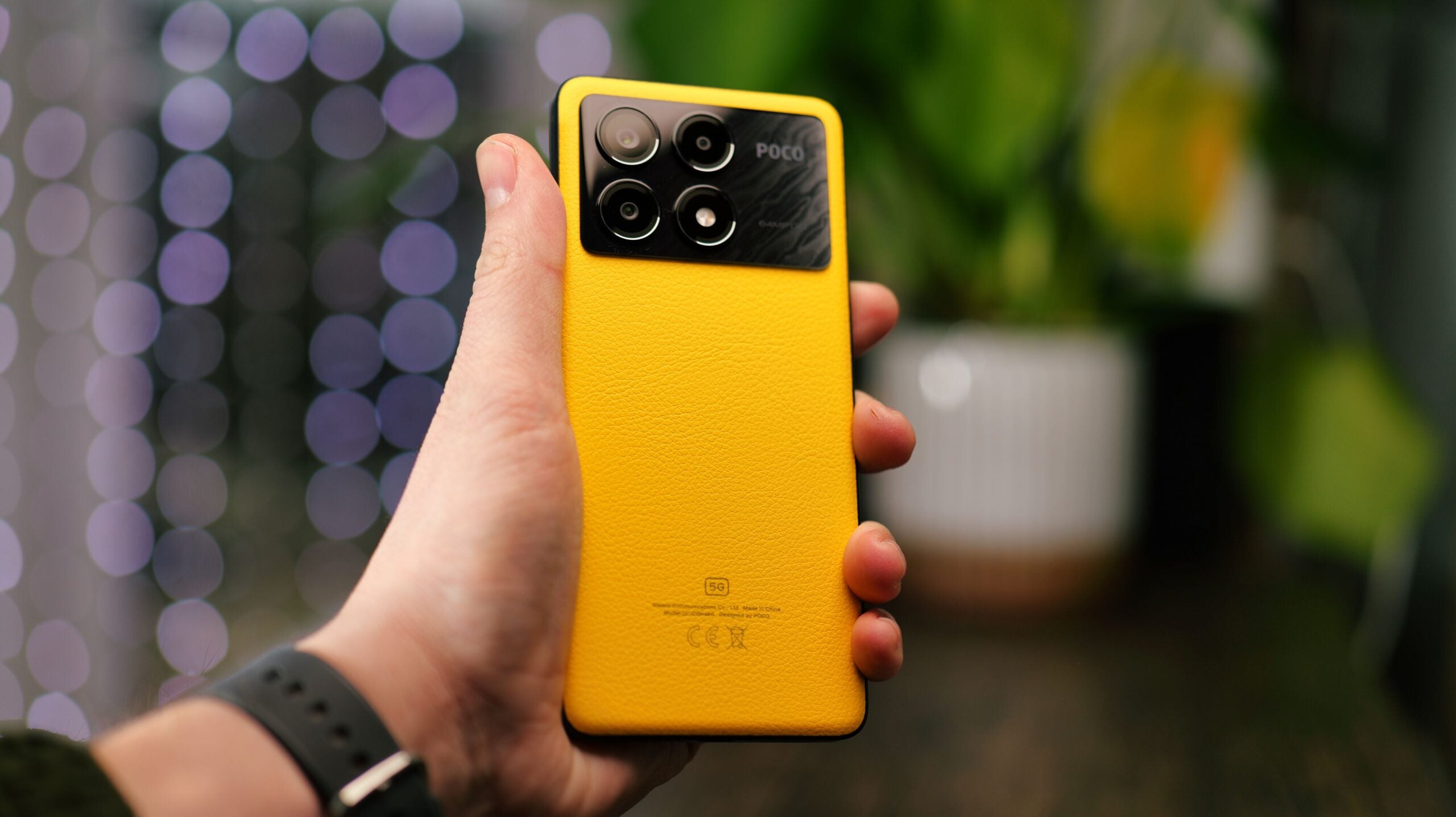
Both have the same 6.67-inch, 2712×1220 resolution screen and can output up to 1800 nits, making the screen perfectly visible even in bright sunlight. The dimensions of both are also identical, however, the X6 model is slightly lighter, weighing just 181g compared to the ever-so-slightly heavier 190g.
Both also boast an IP54 rating, making the handsets reliably dust and water-resistant and therefore durable. Speaking of durability, although they differ in their versions, they also feature Gorilla Glass screens, with the X6 featuring a newer edition, Gorilla Glass Victus, whereas the X6 Pro features the slightly older 5 edition.
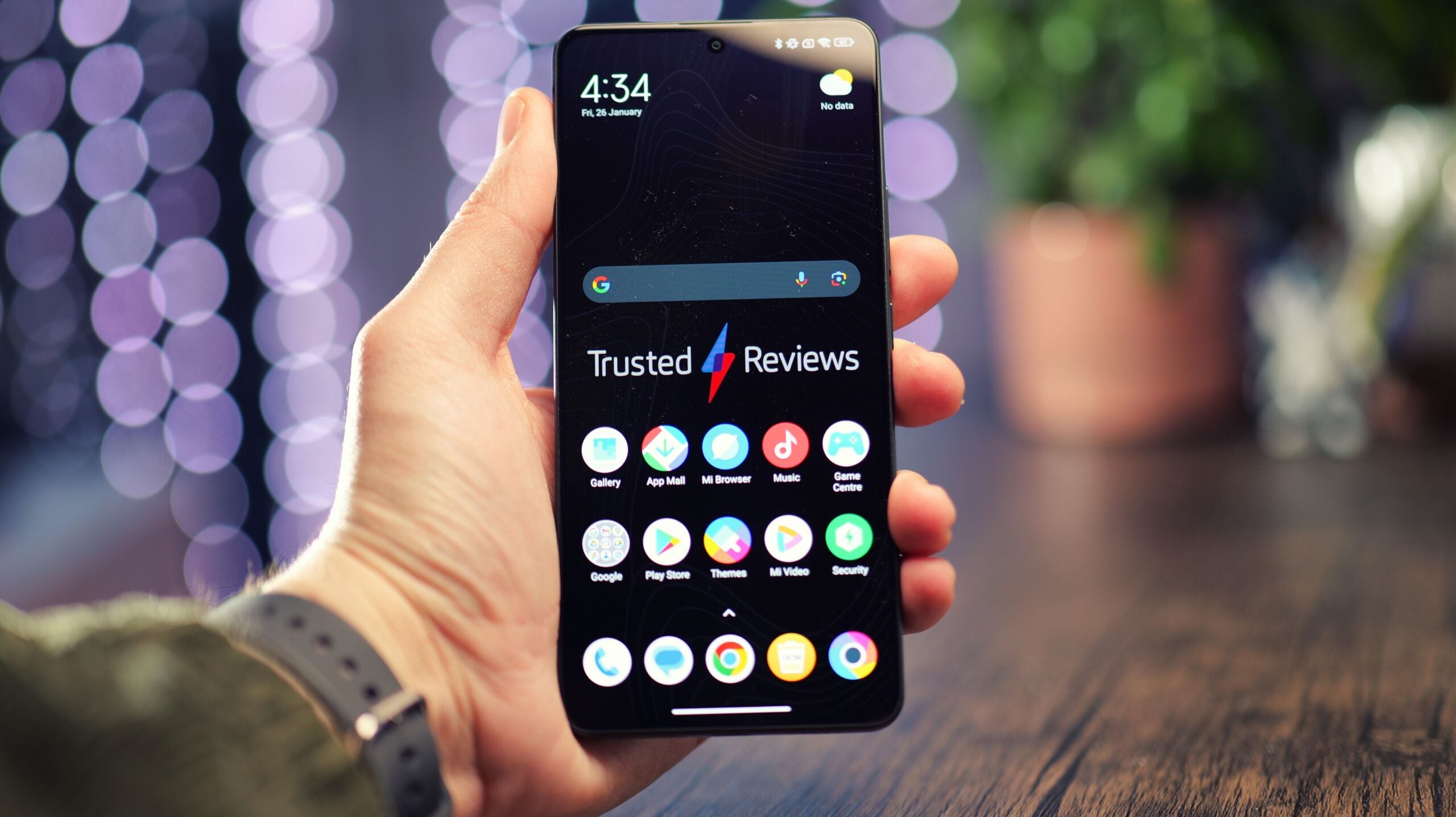
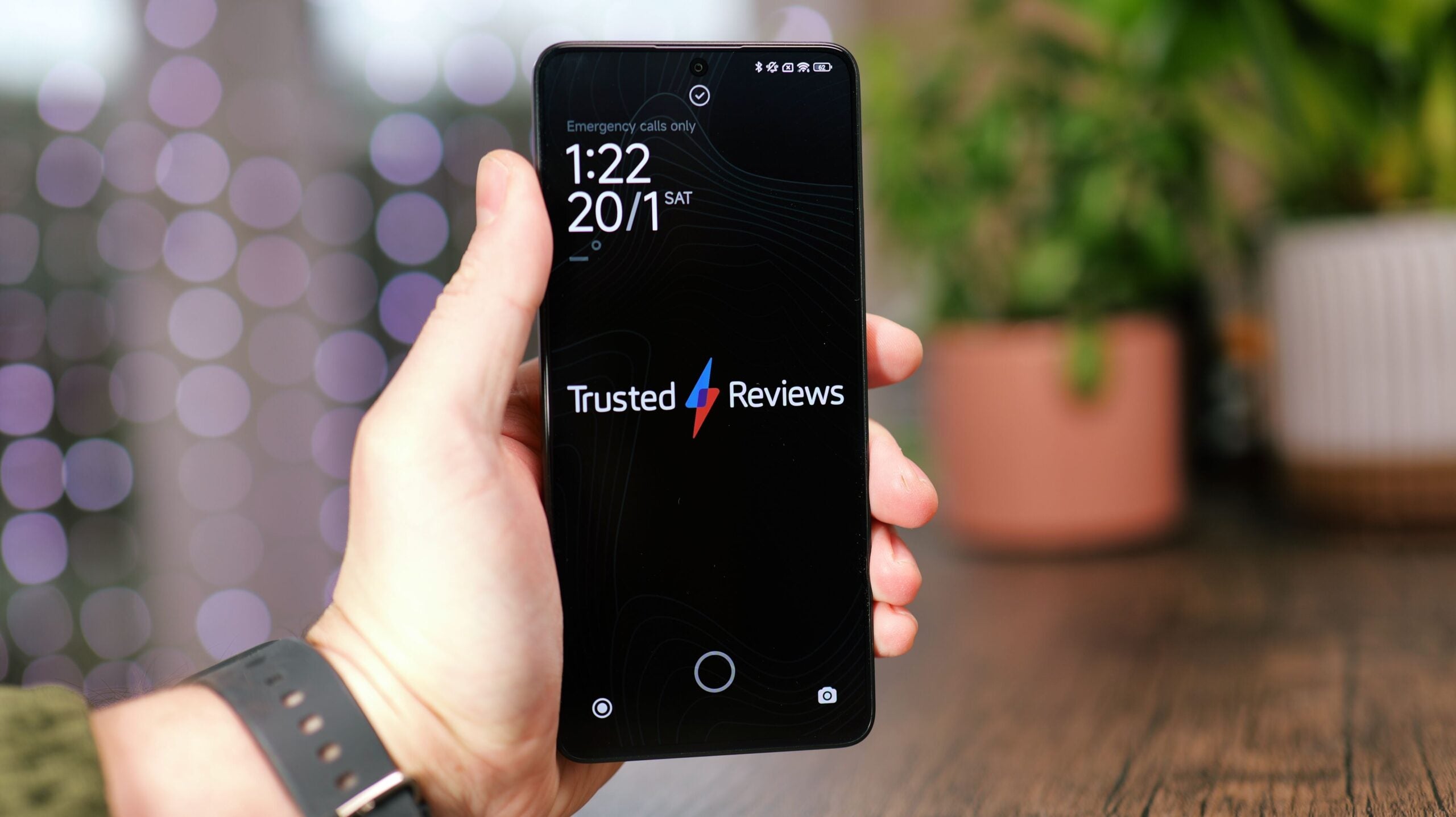
The Poco X6, unlike the X6 Pro, has a headphone socket, which is particularly ideal for those who prefer listening to wired audio.
Both displays have an adaptive refresh rate that can switch between 60Hz and 120Hz, however, the X6 Pro also has a default 480Hz touch sampling rate that can be boosted to 2160Hz, making it preferable for mobile gamers.
Camera
Similar to design, the Poco X6 and X6 Pro also have a fairly identical camera setup. Both have a trio of cameras at the rear, which includes a 64MP main camera, 8Mp ultrawide and 2MP macro, and a 16MP front camera.
In his review of the X6 Pro, Luke Baker mentioned that “a lot of my photos were taken at night or in dimly lit scenarios. The main camera holds its own in these challenging conditions; it exposes well and rarely introduces any motion blur.” As Luke also reviewed the X6, he noted the similarity in ability as “the main camera of the X6 does a decent job after dark too.”
It’s worth noting that while the main 64MP and 16MP front-facing lenses are praised on both models, the ultrawide and macro lenses are not as celebrated in either handset. For the X6, the two lenses were hailed as “far less impressive” and the “2MP macro snapper rarely comes into play at all.” Similarly, Luke concluded that the ultrawide and macro lenses on the X6 Pro “are best avoided for the most part.”


Performance
As the Poco X6 and X6 Pro have so far been evenly matched regarding design and camera quality, the biggest difference between the two is with their processors.
The X6 runs on the Qualcomm Snapdragon 7 Gen 2 chip, whereas the X6 Pro runs on the MediaTek Dimensity 8300-Ultra. Although the former is decent and fairly fast, the latter is a seriously powerful processor and better suited for more intensive tasks.
For day-to-day use, Luke found the X6 to be “responsive and speedy”. Apps open quickly, scrolling is smooth and animations look fluid. There is a caveat, however, that “there were a couple of instances where an animation stuttered slightly, but these were extremely rare.” In comparison, the X6 Pro was hailed as “a delight to use on a day-to-day basis”. We never found its performance to be lacking, even during heavy multitasking. It was always quick and responsive, and apps opened in a flash.
In our benchmark tests, we found that the X6 Pro came out on top, achieving a single-core score of 1424 and a multi-core score of 4403, whereas the X6 achieved lower respective scores of 1016 and 2829.
Another key difference between the X6 and X6 Pro is their operating system, as the X6 ships with MIUI 14 and the X6 Pro adopts the newer HyperOS. MIUI 14 is based on Android 13, whereas HyperOS is based on Android 14. While on paper this seems like a substantial difference, Luke reports that for the X6 Pro “HyperOS is almost identical to MIUI.”
Regardless, there are still changes, albeit subtle, between the two operating systems, mainly in the form of aesthetic tweaks, which don’t necessarily change the way you work with the phone.
Battery
Both Poco phones are fast-charge capable and come equipped with a 67W fast charger. Although negligible, there are still differences between the two handsets’ battery life.
Despite the X6 housing a slightly larger battery than the X6 Pro, it still finds itself falling slightly behind in our benchmark tests. While the X6 takes an impressive 50 minutes to charge from 1-100%, the X6 Pro only takes 45 minutes.
The X6, however, beats the X6 Pro on battery drainage. 60 minutes of Netflix streaming saw just a 7% battery drain, compared to the X6 Pro’s 8%. 30 minutes of light gaming on the X6 drained the battery by 8%, whereas the X6 Pro took a slightly bigger beating with 10%.





